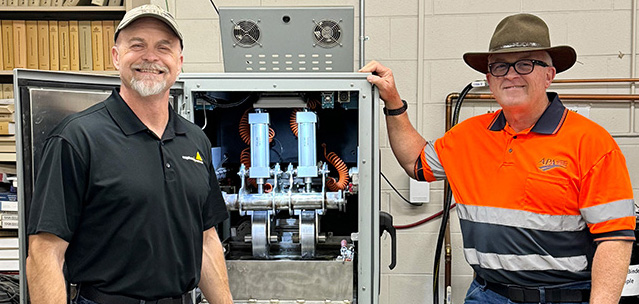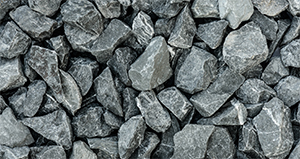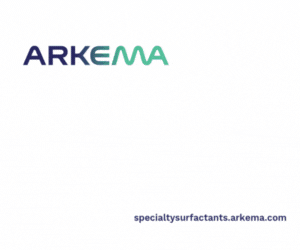
Welcome to the third installment of Mix Busters – truths about asphalt myths. Emulating the theme of the Discovery Channel program, “MythBusters.” Between Buzz and Dave, they have over 70 years of experience designing, constructing, maintaining, and experimenting with asphalt pavements.
For 15 years MythBusters would address various myths or urban legends to try to determine if they were true or not. Similarly, within the asphalt world, there are many long and often strongly held beliefs that may need to be examined objectively to establish if they are true or not.
Moreover, the authors have a willingness to question and challenge various “truths” we “know” about the design, construction, and maintenance of asphalt pavements. Drawing heavily on the eight completed cycles of the Pavement Test Track operated by the National Center for Asphalt Technology (NCAT) at Auburn University and untold numbers of field projects, they will explore topics that they recognize as needing to be examined for their validity.
MYTH: “Do we really need big rock for strong asphalt?
Thank you, Dr. Isaac Howard, P.E. (Mississippi State University) and Oak Metcalfe, P.E. (formerly with the Montana Department of Transportation and the Federal Highway Administration) for independently suggesting this topic.
This one’s been passed down through generations of asphalt professionals: large nominal maximum aggregate size (NMAS) goes in the bottom, small NMAS at the top. But somewhere along the line, the original rationale got lost. While it’s true that finer surface mixes provide a smoother and more impermeable ride, the idea that deeper layers require larger aggregates for structural strength doesn’t hold up to scrutiny.
The National Center for Asphalt Technology (NCAT) has long shown that tensile stress and strain decrease with depth in a pavement structure, meaning deeper layers are actually subjected to less structural demand—not more (NCAT Report 18-01, 2018). A key takeaway: it’s not the aggregate size that ensures strength at depth, but overall layer thickness and mix design.
So why do we see large NMAS mixes at the bottom? The answer is cost-efficiency. Larger stone mixes often use less processed aggregate and lower binder contents, making them cheaper to produce. They aren’t stronger—they’re just more economical (NCAT Report 18-03, 2018).
On the performance side, well-designed mixes using smaller aggregates and higher binder contents can perform exceptionally well throughout the pavement depth. NCAT’s Test Track results confirm that high-binder-content mixtures placed even at the bottom of the structure improve flexibility and help mitigate bottom-up fatigue cracking (NCAT Test Track Findings 2024, 2024).
The verdict: You don’t need big rock for a strong asphalt mix—just a well-balanced design. Let performance, not tradition, drive your material choices.
MYTH: “Are low air voids and high VFA a recipe for rutting and bleeding?”
For this myth, we would like to thank Howard Anderson, P.E. (Utah Department of Transportation) for his pioneering work on mixtures that are both low in air voids and high in VFA.
“You can’t design an asphalt mixture with low air voids and high Voids Filled with Asphalt (VFA) without risking rutting and bleeding.” This notion is rooted in AASHTO M323 volumetric mix design criteria developed during the era of virgin aggregates and neat (unmodified) asphalt binders and low amounts of RAP being utilized. Early research from the Superpave era found that asphalt mixes with less than approximately 2.75% air voids posed a higher risk of rutting and bleeding. These findings led to volumetric boundaries that became entrenched in specifications.
However, the materials and design strategies of today are vastly different. Modern asphalt mixes frequently incorporate polymer-modified binders, reclaimed asphalt pavement (RAP), among other materials, none of which were contemplated in the original volumetric thresholds. As a result, applying the strict AASHTO M323 criteria to today’s innovative materials can lead to missed opportunities for performance and cost efficiency.
One of the most compelling case studies comes from the Utah Department of Transportation (UDOT). In 2024, UDOT programmed over 500,000 tons of surface mix containing highly polymer-modified (HiMod) binders, designed intentionally with air void contents as low as 1.0% and elevated VFA values (UDOT Peer Exchange, 2023; NCAT Newsletter, Spring 2024). These mixes underwent extensive lab and field evaluation—including the Hamburg Wheel Tracking Test (HWTT) and IDEAL-CT testing—and showed exceptional resistance to rutting, cracking, and moisture damage.
More importantly, no signs of bleeding were observed, either in lab evaluations or in field applications. This is a clear indication that binder migration and rutting are not inevitable consequences of low-air-void designs, so long as performance criteria are met.
The findings echo results from NCAT’s Phase 8 Test Track research, which evaluated mixes with air void contents below traditional thresholds. In one test section, NCAT documented air voids as low as 2.8% and VFA up to 83%, with over 10 million ESALs of loading applied. The mix exhibited no significant rutting, affirming that modern materials—especially when paired with performance testing—can break free from rigid AASHTO M323 constraints (NCAT Report 22-04, 2024).
The verdict: Today’s materials and performance-based testing have changed the rules. Low air voids and high VFA do not automatically lead to rutting or bleeding—especially when using advanced materials. The key is a balanced mix design validated through robust performance testing that allows variation from strict AASHTO M 323 volumetric criteria.
MYTH: “Must we exclude all polish-susceptible aggregates from surface mixes?”
Thank you, Nathan Moore, P.E., NCAT Test Track Director, for contributing to this topic.
Traditionally, highway agencies have designated aggregate sources as either suitable or unsuitable for surface mixes based on their polishing characteristics. This binary approach often led to the exclusion of locally available aggregates deemed polish-susceptible, resulting in increased costs and potential logistical challenges.
However, advancements in research, particularly by NCAT, have demonstrated that the friction performance of asphalt surface mixes is not solely dependent on using exclusively polish-resistant aggregates. NCAT’s studies have shown that blending a smaller proportion of high-friction aggregates with polish-susceptible ones can achieve satisfactory long-term friction performance.
For instance, research conducted at the NCAT Pavement Test Track revealed that a surface mix containing less than one-third of high-friction aggregates, blended with more than two-thirds of polish-susceptible aggregates, maintained safe friction levels over its service life. This finding challenges the notion that only high-friction aggregates can ensure surface safety. (NCAT Report 15-04, 2015)
Further studies have reinforced these findings, indicating that even lower percentages of high-friction aggregates may suffice, depending on the specific materials and traffic conditions. These insights have been validated through multiple research cycles on the NCAT Test Track, encompassing diverse mix designs and aggregate sources from across the country. (NCAT Test Track Research Findings 2000- 2024, 2024)
The verdict: It’s no longer necessary to categorically exclude polish-susceptible aggregates from surface mixes. By employing performance testing, agencies can utilize a broader range of aggregate sources without compromising safety. This strategy not only enhances flexibility in material selection but also promotes cost-effectiveness in pavement construction. (For additional information on pavement friction testing, please see “Pavement Friction for Road Safety: Primer on Friction Measurement and Management Methods, 2023.”)
MYTH: “When implementing recycled binder availability, is it necessary to change AASHTO M323 volumetrics?”
Traditionally, asphalt mix designs have operated under the assumption that 100% of the aged binder in Reclaimed Asphalt Pavement (RAP) is available to blend with virgin binder during production. However, research has shown that this assumption is inaccurate. The degree of recycled and virgin binder blending is commonly referred to as Recycled Binder Availability (RBA). In reality, not all
of the binder in RAP is active. When production temperatures are lowered using warm mix asphalt technologies, the available RAP binder to blend with the virgin binder is likely to be even less.
A Texas Transportation Institute Project Summary, 0-7062, offered the following definition for RBA, “(the) amount of recycled binder that activates at conventional production temperatures, blends with the virgin binder, and becomes an effective component in the asphalt mixture.” Moreover, the researchers found that for RAP, 16 to 96 percent was available according to their literature review.
Several factors contribute to RBA. Included in these are the high-temperature properties of the RAP binder, properties of the virgin binder, utilization of an asphalt rejuvenator, the production temperatures of the hot plant, and storage time from production to paving.
Recognizing this, the Georgia Department of Transportation (GDOT) adopted the Corrected Optimum Asphalt Content (COAC) approach when they questioned RBA in their mixtures. Initially, GDOT assigned only 75% of the RAP binder as effective and later reduced that to 60%, effectively increasing the virgin binder content to compensate for the inactive portion of RAP binder. This approach allows mix designers to account for the real contribution of aged binder while
improving overall mix durability. (Asphalt magazine, “Georgia Addresses Pavement Performance Problems Linked to High RAP Usage”, Fall 2020) (Asphalt magazine, “Is RAP Just Black Rock?”, Spring 2024)
What’s particularly noteworthy is that GDOT implemented COAC without changing its volumetric criteria. Mix designs were still approved based on established volumetric targets— air voids, VMA, and VFA—while quality control during production focused solely on asphalt content and gradation. Since no production-phase volumetric testing was required, COAC allowed total binder content to be increased without interfering with traditional specifications.
But here’s the key caveat: air voids in the field drop when RBA is used. Agencies that wish to follow Georgia’s lead must decide how to manage the resulting reduction in air voids. Options may include adjusting compaction procedures, rebalancing gradations, or explicitly updating acceptance limits to reflect this shift in mixture behavior. This phenomenon has been documented through ongoing studies such as NCAT’s work on RBA and performance implications (Dr. Fan Yin, P.E., “Recycled Binder Availability and Its Impact on Asphalt Mixture Performance” SEAUPG Presentation, 2023).
The verdict: Implementing an RBA factor does not require changing strict volumetric design criteria, provided an agency’s specifications and testing program support it. GDOT’s approach demonstrates that it’s possible to modernize binder accounting practices, improve durability, and still operate within existing design frameworks. However, the process demands thoughtful attention to the properties of the RAP an agency is allowing into their asphalt mixtures to determine how they want to approach the question of binder availability.
Buzz and Dave encourage readers to share ideas for future investigations. Email your suggestions to asphaltmixbuster@gmail.com. If your topic is used, you will be given full credit.
Dr. Buzz Powell, P.E., is the Asphalt Pavement Alliance Technical Director. Dave Johnson P.E. is an Asphalt Institute Senior Regional Engineer. or the idea!















